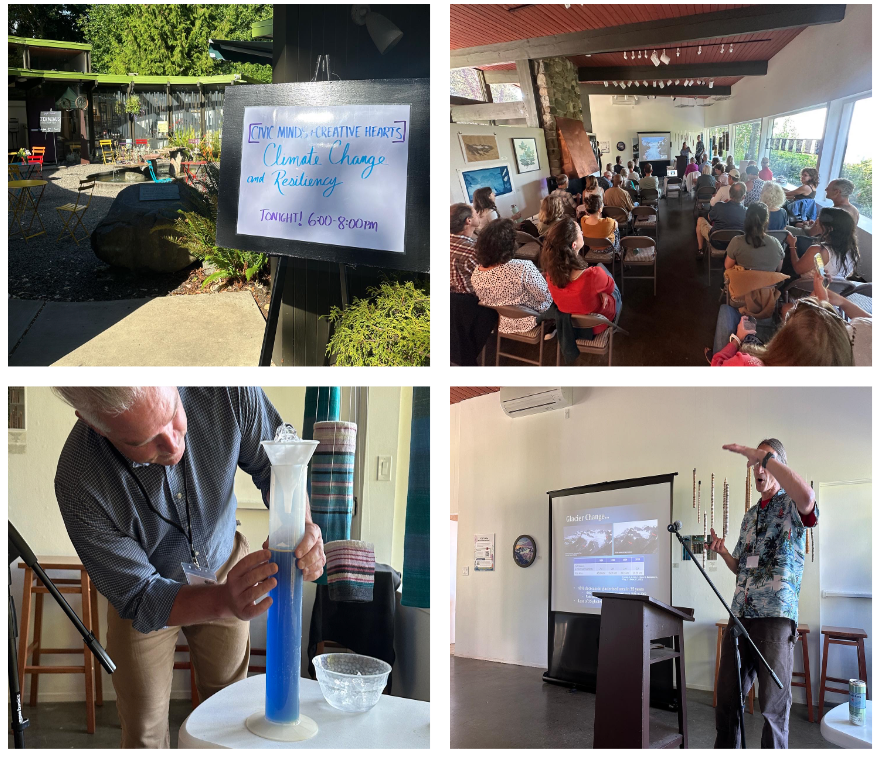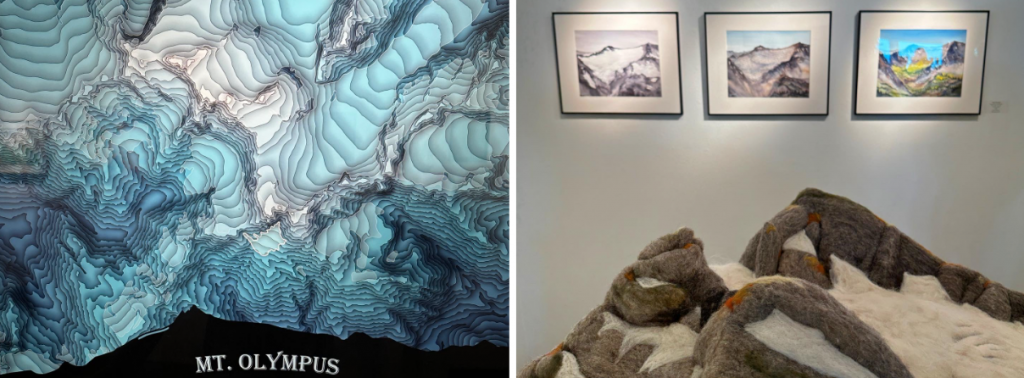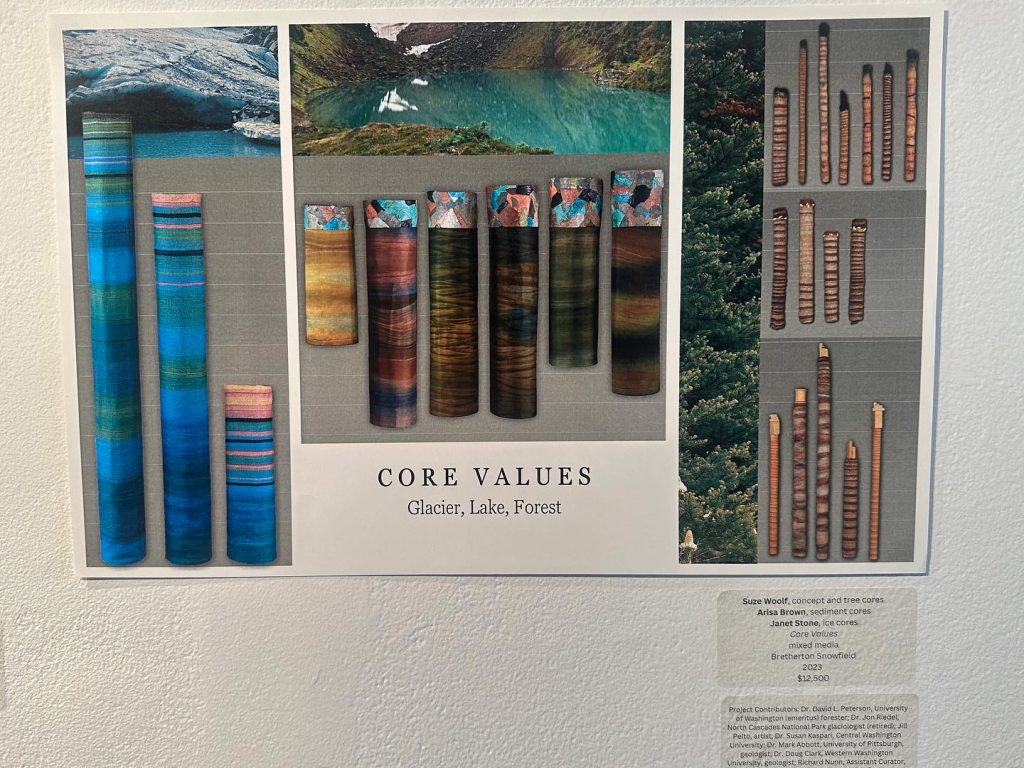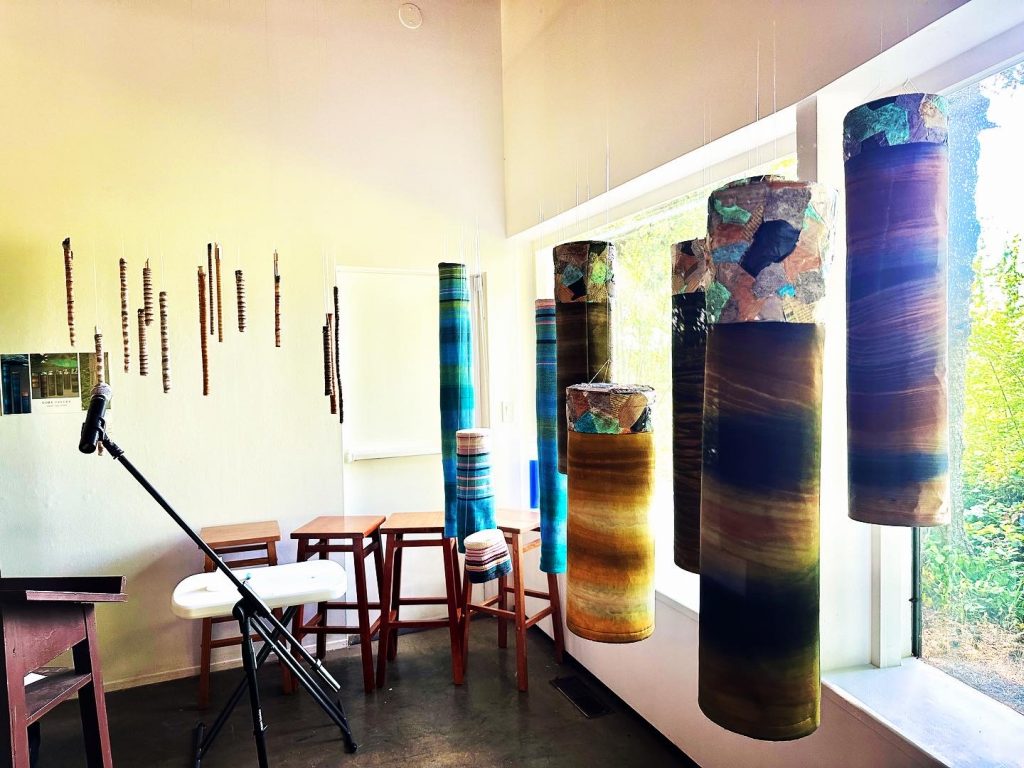
There’s beauty in everything.
Even climate change.
That was one of the main takeaways from my recent participation in the Port Angeles Fine Arts Center’s public engagement on their recent installation “Terminus: Paying Tribute to Olympic’s Melting Glaciers Through Art and Education.” The exhibit is full of stunning art that depicts the terrifying loss of our glaciers in a beautiful and inspiring way.

I had the honor of serving on a panel alongside legendary scientists Bill Baccus and Ian Miller. They presented the latest research on the connection between our melting glaciers and the health and resilience of our coasts. For example, one of the many important things our glaciers do is provide a year-round source of cold water to our streams, which of course is critical to salmon as well as our own agricultural and municipal water supplies. Our glaciers are shrinking, and dozens have already disappeared.

Another interesting fact was that if all of our glaciers in the Olympics were to melt, it would only contribute the equivalent of 0.002 mm of global sea level rise. But the alarming trend of melting glaciers is not unique to Washington - we’re seeing this high rate of melting across the globe. If all the glaciers in the PNW (Oregon, Washington, and British Columbia) melted, it would add 2.5 mm of sea level rise; if all the glaciers in the world melted, it would add 1.4 ft. But if all the ice in the world were to melt, seas would rise by 24 ft.
So what can we do about it? Turning off the tap is critical - we all need to reduce our emissions both individually and on a national and global scale. And we need to start planning for sea level rise, whether by modifying coastal infrastructure or moving it out of harm’s way (and stop building in harm’s way to begin with). This is one of the many reasons we are so stoked for our recent dual Coast & Climate victories that will help ensure Washington is both planning for rising seas and funding efforts to enhance the resilience of our coastal communities.
Climate change is terrifying because it affects every aspect of our lives, but that is a two-way street - every action we take can help us in the fight to adapt. Every choice we make, from the food we eat to the clothes we wear, has a climate impact. So whether you drive less, plant an Ocean Friendly Garden, refuse single-use plastics, compost at home, refuse fast fashion, eat local foods, participate in social work that lifts others up, or any of a thousand choices we make each day - everything we do to improve the health of our communities and our ecosystems also improves their resilience to the coming changes.

The value of art
There were too many incredible pieces to share in one blog post (you’ll just have to visit Port Angeles and check it out for yourself before August 25th ), but if I had to pick a favorite, I’d vote Core Values, a hanging representation of ice, wood, and lake sediment cores (which scientists use to study atmospheric changes over geologic timespans). Artist Arisa Brown used a collage of newspaper articles on climate change to represent the plastic-filled top layer of the lakebed sediments. This new layer is what scientists of tomorrow will use to differentiate the Anthropocene - the industrialized epoch we find ourselves in, or the 6th mass extinction - from the previous geologic period (the Holocene).
One of my main takeaways was the need for and power of art to communicate important issues like climate change. We discussed how valuable both the scientists and the artists found the process of collaborating on the Terminus project to be. One topic that came up during the discussion was the use of art in science. It’s challenging, because art is emotional, whereas with science the goal is to be as objective as possible and remove bias and emotion. Present the facts and figures in a clear and concise manner and let the reader do with it what they will.
But facts don’t move us to action. Emotions do.
Knowing something is harmful doesn’t motivate us. It’s when we feel that harm that we act.
I left with the distinct impression that there is more room for art in our efforts to combat climate change - a lot more. It can move us in ways that graphs and reports just can’t, and do so in an inspiring way. Seeing these terrifying changes depicted in such artistic ways left me feeling motivated to take action - not out of fear, but out of hope. The future is what we make it, and we can make it beautiful.
To learn more and see more of the art, check out the Terminus Storymap, which also includes many before and after pictures of our disappearing Olympic glaciers.


